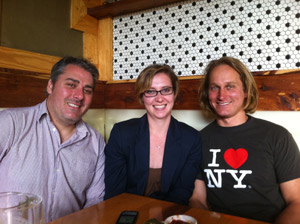 I’ve always been a sucker for a good story. And I don’t mean that in a strictly journalistic sense. I just love and appreciate a strong narrative thread—wherever I find it. An intriguing beginning, an edge-of-the-seat middle, and a satisfying ending. So when I was offered the opportunity to go to Atlanta in March to visit the site of NRPA’s next big park rebuilding project, the advice my colleague Phil Hayward gave me struck a chord: “Just keep your eyes and ears open, so that you can tell the story of the park.”
I’ve always been a sucker for a good story. And I don’t mean that in a strictly journalistic sense. I just love and appreciate a strong narrative thread—wherever I find it. An intriguing beginning, an edge-of-the-seat middle, and a satisfying ending. So when I was offered the opportunity to go to Atlanta in March to visit the site of NRPA’s next big park rebuilding project, the advice my colleague Phil Hayward gave me struck a chord: “Just keep your eyes and ears open, so that you can tell the story of the park.”
Sometimes it takes a little while for any over-arching story to emerge. This certainly proved to be the case with Selena Butler Park. NRPA’s newest Parks Build Community project is an urban revitalization partnership involving two municipal government departments, federal funds, commercial vendors, civic groups, elected officials, and (of course) a national nonprofit association. Add to that the “unofficial partners”—local business owners and new and prospective residents—and the landscape began to take on the look of a tangled mass of facts, hopes, cautionary tales, and good intentions.
There were two moments, though, when that neglected few city acres sitting amidst a swirl of discussion and change took shape for me as a vibrant, multi-faceted, compelling story. The first came while sitting in Noni’s Deli, around the corner from the park. The official part of the project kickoff had ended for the afternoon, and a few of the Friends of Butler Park invited me to chat over a cold drink. There was no one thing I heard that day that stood out in my mind—this was simply a chance to see and hear what a small, fenced-off park meant to the people around it. The friends told me what it had been like to watch the park decay and then be shut down. And what an uphill climb it had been advocating for a neighborhood park during a span of time (following the 2008 tornado and the demolition of the nearby housing) when there really was no fixed neighborhood.
While we were chatting, the deli owner chimed in and talked about all the impromptu meetings he’d hosted concerning the future of that park. And while I was scribbling down notes, the local city council member stopped by long enough to say, “Hey, exciting to be part of the change that’s happening, isn’t it?!”
One of the members of the friends group present that day talked about what it had been like to buy his very first house—a former crack den close to the park—and get accosted by drug dealers from all sides as he cut through the ball field on his way home.
It was still a tangle, but I began to see that this park represented a convergence of both hopes and fears. It is rare that a place long dreaded and avoided by all those around it can quickly become a rallying point for optimism. A symbol of all that could be vital and magnetic in a community. This, I realize, is part of the paradox of urban parks. The potential for waste, crime, decay, and even terror, balanced against the infinite possibilities held by a neighborhood park for healthy play, cross-generational friendships, happy children, and vibrant quality of life. In the case of Selena Butler Park, I felt the dream of the former and the electrical charge of hope in the latter—all as I sat in a deli and listened.
But it was Helene Mills who showed me the genuine story among those contrasts. The octogenarian activist, who had seen it all and done it all in the blocks surrounding Selena Butler Park, opened the door to the history and uniqueness of this corner of Atlanta. I will be posting more about Ms. Mills soon….
Maureen Hannan is the Senior Editor for Parks & Recreation magazine.

